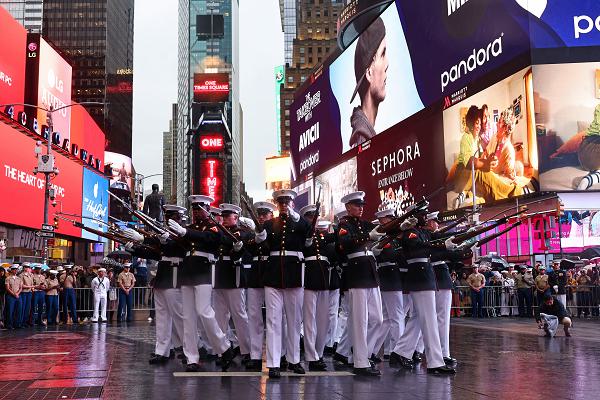- Details
- Hits: 2534

Haleiwa, Hawaii. (May 22, 2025): In this photo by Sergeant Jared Simmons, Soldiers race in ancient “outrigger” canoes as part of their physical training in this island paradise. Outriggers can be traced as far back as 30,000 years ago when the vessels were used to travel between Pacific islands.
Outrigger canoe racing was first recorded by British explorer Captain James Cook in 1779 when he witnessed the sport Hawaiians called hei hei wa’a. Competitors in these races were mainly tribal chiefs, and heavy bets were placed on the outcome. The winning team received rewards and prestige for their tribe. In 1909, the Outrigger Canoe Club (OCC) was founded to introduce the sport to American servicemembers visiting Hawaii. The OCC eagerly hosted military teams by providing canoes, equipment, qualified steersmen, and even an orientation on canoe paddling. Later during World War II, the OCC organized the first racing regatta that included special races for officers and enlisted personnel. In fact, Admiral “Bull” Halsey presented the winning trophy to the enlisted men’s team in 1943 in a ceremony that was attended by the “King” of Hawaiian surfers, Duke Kahanamoku. At the first regatta, three Navy ships stationed at the Honolulu Harbor were invited to participate along with the Belgian naval training ship L’Avenir.
- Details
- Hits: 2460

Colorado Springs, Colorado. (May 29, 2025): In our last edition, we reported on the tortuous end of training as an Air Force Academy cadet is “the longest day of their lives.” In this photo by Dylan Smith, these same cadets enjoy the best day of their lives by graduating and receiving their commissions as second lieutenants. The nine hundred plus members of the Class of 2025 took their oaths of office at a ceremony held at Falcon Stadium on campus.
This year’s class consisted of 909 cadets, of whom 69% are men, and 31% are women. In all, 791 cadets were commissioned into the Air Force and ninety-three were commissioned into the Space Force. Once again, the Academy attracted the absolute best and brightest from U.S. high schools. The average high school GPA for the Class was 3.88 and their average SAT score was 669 in reading and writing and 688 mathematics.
- Details
- Hits: 2496

New York City. (May 31, 2025): In this photo by Lance Corporal Christopher Prelle, members of the Marine Corps Silent Drill Platoon execute their "bursting bomb" sequence during Fleet Week in Times Square. The first Fleet Week in New York was held in 1984, timed with the Memorial Day weekend, and has been a tradition ever since. During the annual celebration, Navy, Marine Corps, and Coast Guard ships dock in New York harbor to allow the public to tour vessels and meet service members.
The famous Silent Drill Platoon is a highly disciplined drill unit that exemplifies the pride and professionalism of the Marine Corps. The platoon is a 24-man rifle squad that performs military drill movements without any verbal cadence or commands. Each member is individually selected from the Schools of Infantry located in Camp Pendleton, California and Camp Lejeune, North Carolina. Once selected, Marines are assigned to Marine Barracks Washington to serve a two-year ceremonial tour.
- Details
- Hits: 4646

Novo Selo Training Area, Bulgaria. (May 12, 2025): Situated on the Black Sea, the tiny country of Bulgaria plays an outsized role in defending NATO’s eastern flank. In this photo by Specialist Nathan Arellano Tlaczani, Specialist Samuel Roberts heads to cover after planting a charge during a live fire exercise at this sprawling military base. The U.S. Army and the Bulgarian military maintain a strong military-to-military relationship, characterized by joint exercises, training rotations, and the sharing of military facilities.
In April 2006, joint Bulgarian–American Military Facilities were established for tank gunnery, reconnaissance, nuclear, biological, and chemical defense training. As part of the agreement, U.S. Army units conduct numerous joint maneuvers with the Bulgarian Armed Forces including urban assault courses and military police exercises.
- Details
- Hits: 3110

Groton, Connecticut. (May 13, 2025): It is a submariner’s worst nightmare, finding themselves trapped in a stricken submarine hundreds of feet below the waves and the air is running out. To allay these fears, the U.S. Navy has established the Basic Enlisted Submarine School to teach Sailors how to escape in such situations. In this photo by Seaman Duncan Woodard, a student enters the school's pressurized submarine escape trainer. The trainer teaches Sailors how to escape from a submarine that is unable to surface and then survive on the surface until help arrives. The school is an eight-week introduction to the basic theory, construction, and operation of nuclear-powered submarines with courses on shipboard organization, submarine safety, and escape procedures.
The curriculum focusses on three critical areas: firefighting, damage control, and how to escape from a submarine.
- Details
- Hits: 2498

Yokota Air Base, Japan. (May 15, 2025): In the sixties, most American youngsters could be found building and launching rockets in their back yard, dreaming of the day they too would travel into space. In this photo by Airman 1st Class David S. Calcot, Space Force Lieutenant Colonel Kaoru Elliott, second from left, Deputy Commander of U.S. Space Forces-Japan and Nikki Palmer, a Space Systems Command chief engineer, watch model rocket launches with Yokota West Elementary School students. The event is part of the American military’s science, technology, engineering, and math education (STEM) outreach program. A Space Systems Command team visited Defense Department schools overseas for the first time to expand its outreach beyond the continental U.S. and reinforce its commitment to engaging military-students in the hard sciences.


